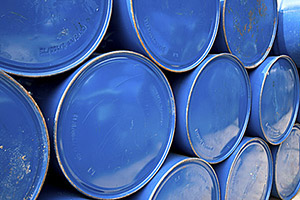A new lifecycle assessment shows that using reconditioned industrial packaging saves hundreds of millions of pounds of greenhouse gas (GHG) emissions annually in the U.S. and Canada. The study, “Life Cycle Assessment of Newly Manufactured and Reconditioned Industrial Packaging” prepared by Ernst & Young Accountants LLP for the Reusable Industrial Packaging Association (RIPA), intended to compare the total GHG emissions of several styles of new and reconditioned industrial packaging used commonly by businesses in North America. The study presents both single- and multi-trip emission comparisons.
annually in the U.S. and Canada. The study, “Life Cycle Assessment of Newly Manufactured and Reconditioned Industrial Packaging” prepared by Ernst & Young Accountants LLP for the Reusable Industrial Packaging Association (RIPA), intended to compare the total GHG emissions of several styles of new and reconditioned industrial packaging used commonly by businesses in North America. The study presents both single- and multi-trip emission comparisons.
Findings show that for single-trip solutions, reusable packaging can reduce greenhouse gas emissions (expressed as pounds of carbon dioxide equivalent, or CO2e) from 26% to nearly 70% over similar new container designs. As the number of reuse trips increases, total GHG savings for all packaging types increases. The packaging studied included 55-gal open head and tight head steel drums, 55-gal plastic drums, and 275- and 330-gal composite intermediate bulk containers.
Using accepted ISO lifecycle analysis principles, the researchers examined every aspect of both production and reconditioning processes. For example, GHG emissions related to the production of a new steel drum include the mining of ore, transportation and steel production. The reconditioning process includes transportation, cleaning, waste management and various refurbishing processes. Importantly, the study assumed recycling as the end-of-useful-life option for all packaging.
“This landmark study shows definitively that industrial packaging reuse reduces carbon emissions by substantial levels,” said Paul Rankin, president of RIPA. For example, according to production statistics compiled by RIPA, manufacturers in North America purchase more than 70 million units of the studied packaging annually. Since about half of these types of packaging are reused, current GHG savings resulting from industrial packaging reuse is nearly 1 billion pounds CO2e per year.
“The study reveals that there remains a great opportunity for additional GHG savings if the amount of industrial packaging reuse can be expanded,” Rankin said.
In addition to the study, Ernst & Young created a Green Packaging Calculator, which is available to RIPA members and their customers. The calculator can be used to determine the environmental impact of various industrial packaging solutions, which are expressed in CO2 equivalents. For example, if a packaging user is interested in determining the amount of greenhouse gas that could be saved by using more reusable packaging, the calculator can provide this number with just a few clicks on a computer. The calculator can also be used to determine GHG totals of any current or potential mix of new and used industrial packaging. The latter option will help companies that currently report their GHG emission totals to the government or the public, or that plan to add this data to their sustainability reports in the future.


